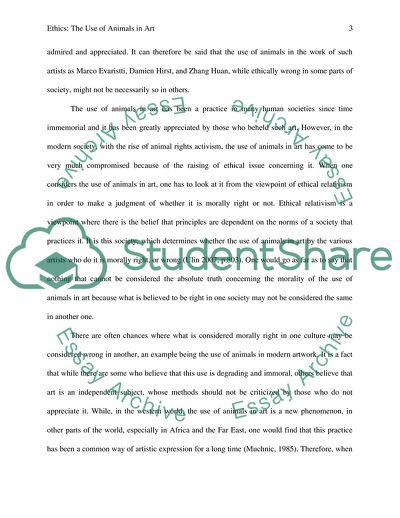Cite this document
(Ethics: The Use of Animals in Art Essay Example | Topics and Well Written Essays - 2250 words, n.d.)
Ethics: The Use of Animals in Art Essay Example | Topics and Well Written Essays - 2250 words. https://studentshare.org/visual-arts-film-studies/1798186-is-it-ethically-and-morally-acceptable-that-artists-like-marco-evaristti-damien-hirst-and-zhang-huan-use-animals-in-their-art
Ethics: The Use of Animals in Art Essay Example | Topics and Well Written Essays - 2250 words. https://studentshare.org/visual-arts-film-studies/1798186-is-it-ethically-and-morally-acceptable-that-artists-like-marco-evaristti-damien-hirst-and-zhang-huan-use-animals-in-their-art
(Ethics: The Use of Animals in Art Essay Example | Topics and Well Written Essays - 2250 Words)
Ethics: The Use of Animals in Art Essay Example | Topics and Well Written Essays - 2250 Words. https://studentshare.org/visual-arts-film-studies/1798186-is-it-ethically-and-morally-acceptable-that-artists-like-marco-evaristti-damien-hirst-and-zhang-huan-use-animals-in-their-art.
Ethics: The Use of Animals in Art Essay Example | Topics and Well Written Essays - 2250 Words. https://studentshare.org/visual-arts-film-studies/1798186-is-it-ethically-and-morally-acceptable-that-artists-like-marco-evaristti-damien-hirst-and-zhang-huan-use-animals-in-their-art.
“Ethics: The Use of Animals in Art Essay Example | Topics and Well Written Essays - 2250 Words”. https://studentshare.org/visual-arts-film-studies/1798186-is-it-ethically-and-morally-acceptable-that-artists-like-marco-evaristti-damien-hirst-and-zhang-huan-use-animals-in-their-art.


